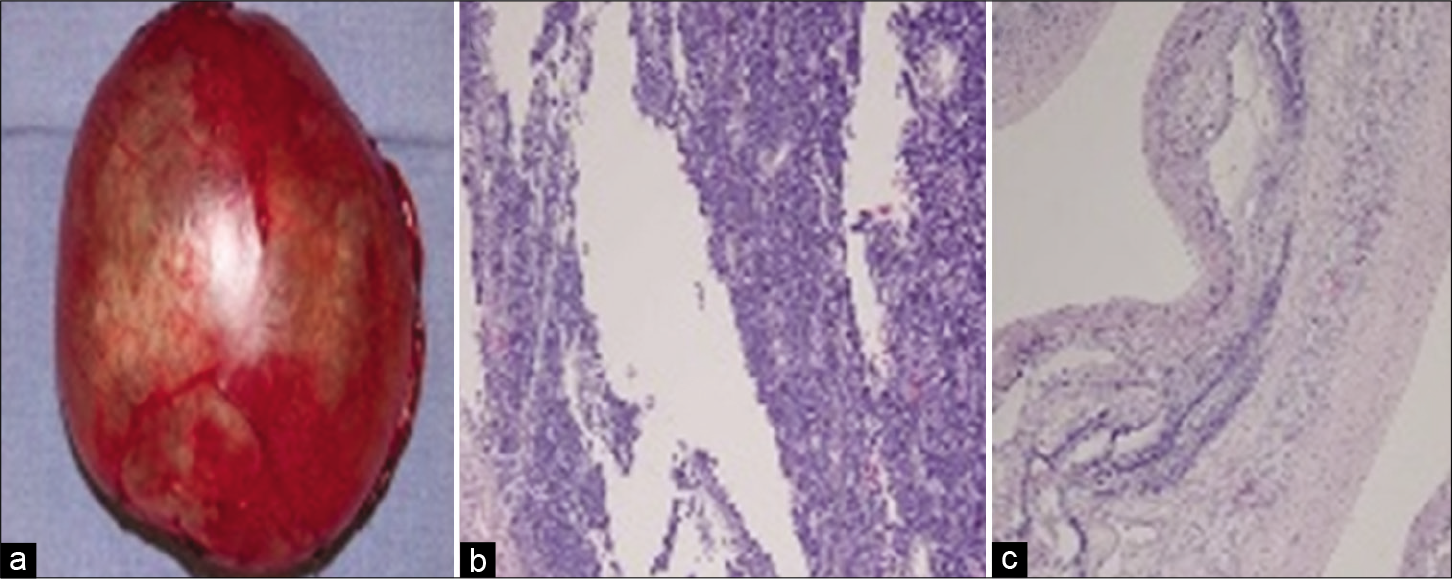Translate this page into:
Granulosa cell tumor
*Corresponding author: Dr. Leena Patwardhan, Bai Jerbai Wadia Hospital for Children, Mumbai, Maharashtra, India. leenapatwardhan68@gmail.com
-
Received: ,
Accepted: ,
How to cite this article: Sharma S, Patwardhan L, Mamtora D. Granulosa cell tumor. Wadia J Women Child Health 2022;1(1):42.
A large benign ovarian cyst [Figure 1] was received in the lab. Grossly, it was a large, spherical, 12 cm in diameter, papery thin cyst filled with dark colored fluid. While further grossing; there was an area of the cyst with a 0.9 cm thick wall. Multiple sections of the same revealed an adult granulosa cell tumor.

- (a) Grossing picture. (b and c) Microscopic picture (Haematoxylin and Eosin staining).
In hindsight, if the material was divided or if the sections were not representative of the pathology, the diagnosis would have been missed. Therefore it is of the utmost importance to avoid cutting a resected specimen in the operation theatre[1] and submit the entire specimen to a single laboratory. This will aid the correct diagnosis and also save resources as the biopsy material is very precious.
Declaration of patient consent
Patient’s consent not required as patients identity is not disclosed or compromised.
Financial support and sponsorship
Nil.
Conflicts of interest
There are no conflicts of interest.
References
- Specimen labelling errors: Just don’t cut it in the operating room. Dissector. 2015;43:23-7.
- [Google Scholar]





